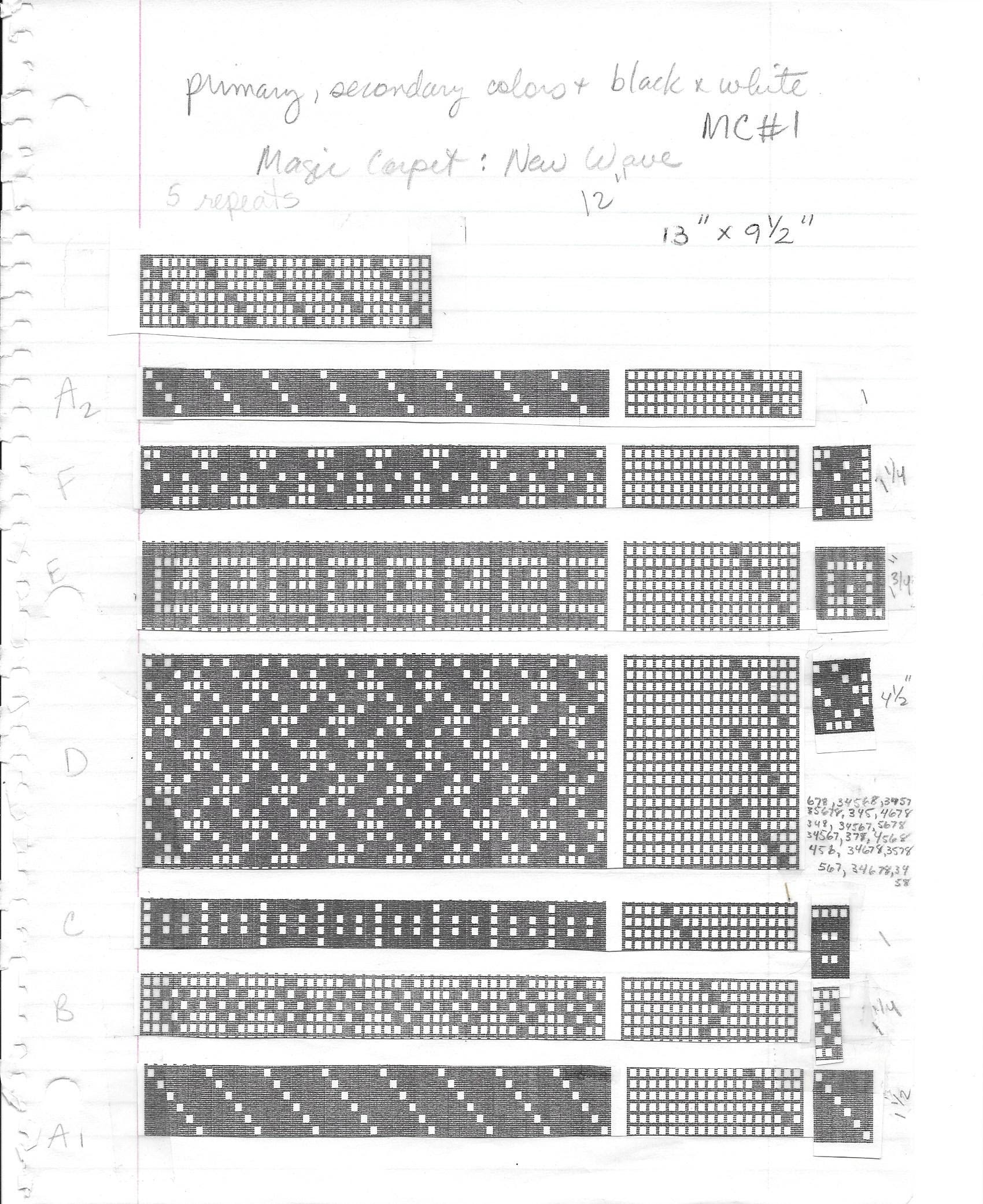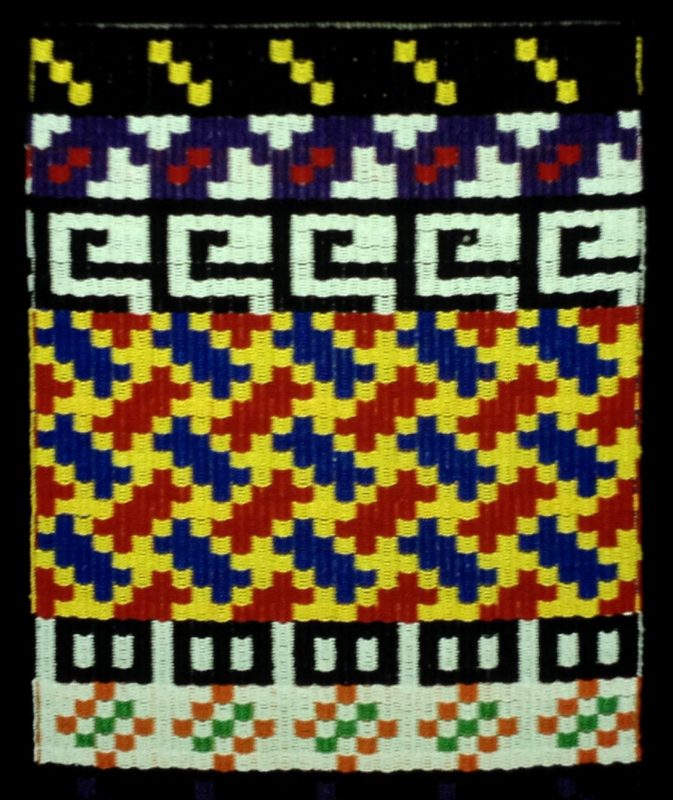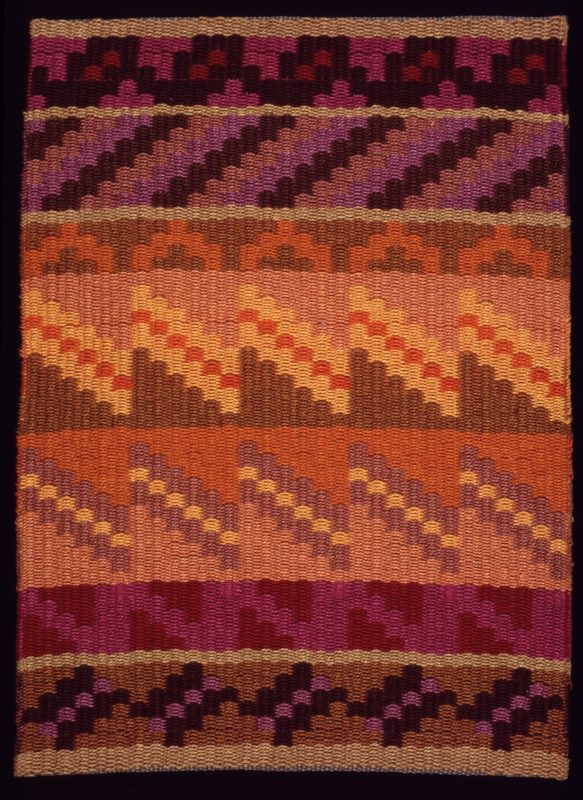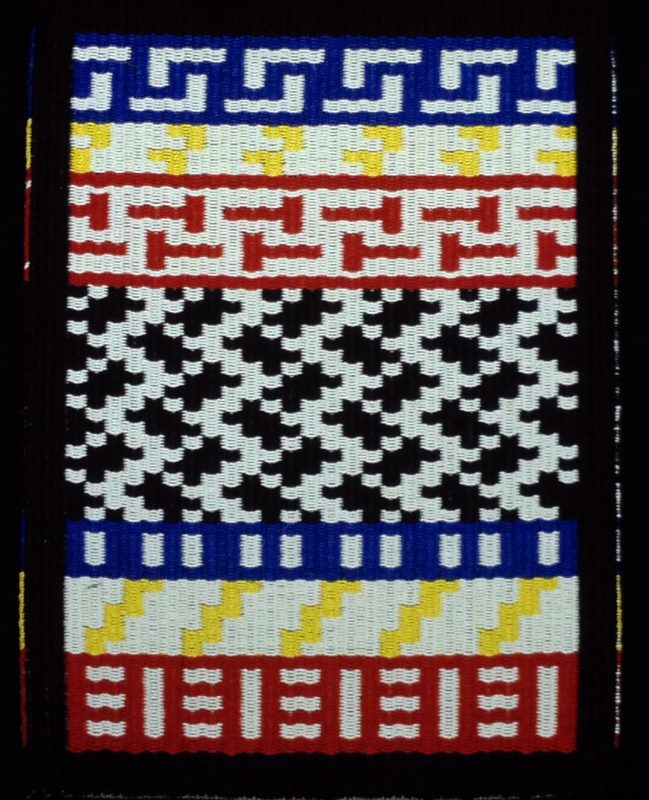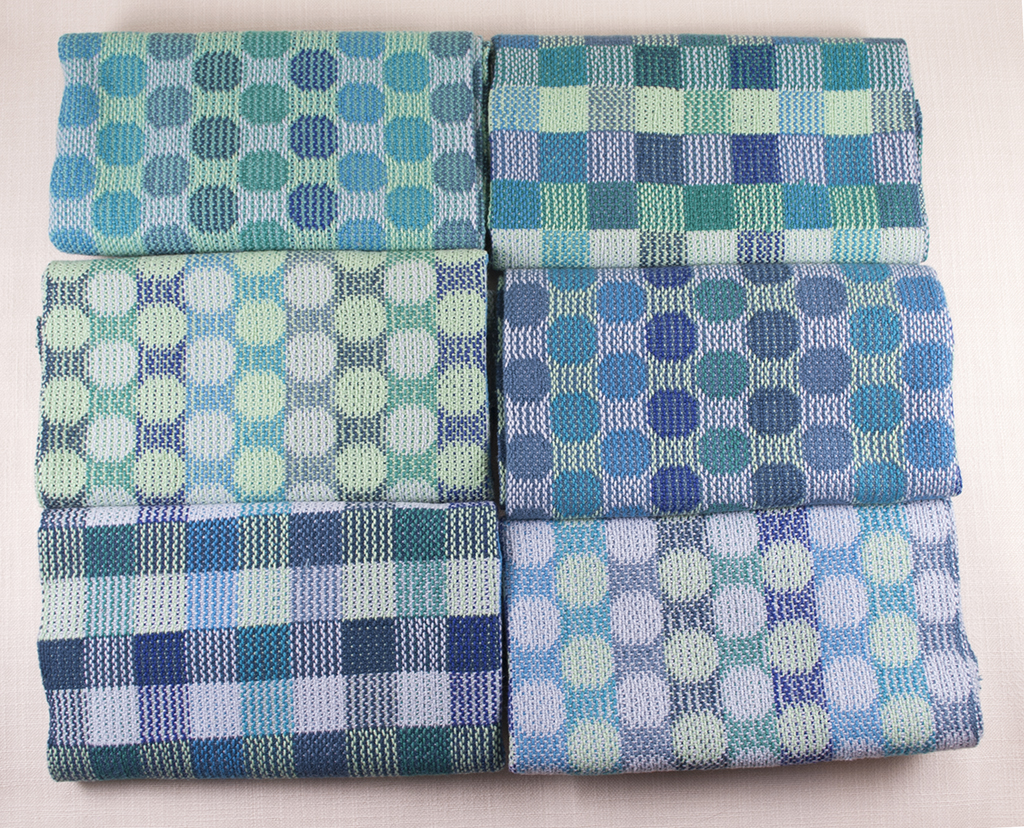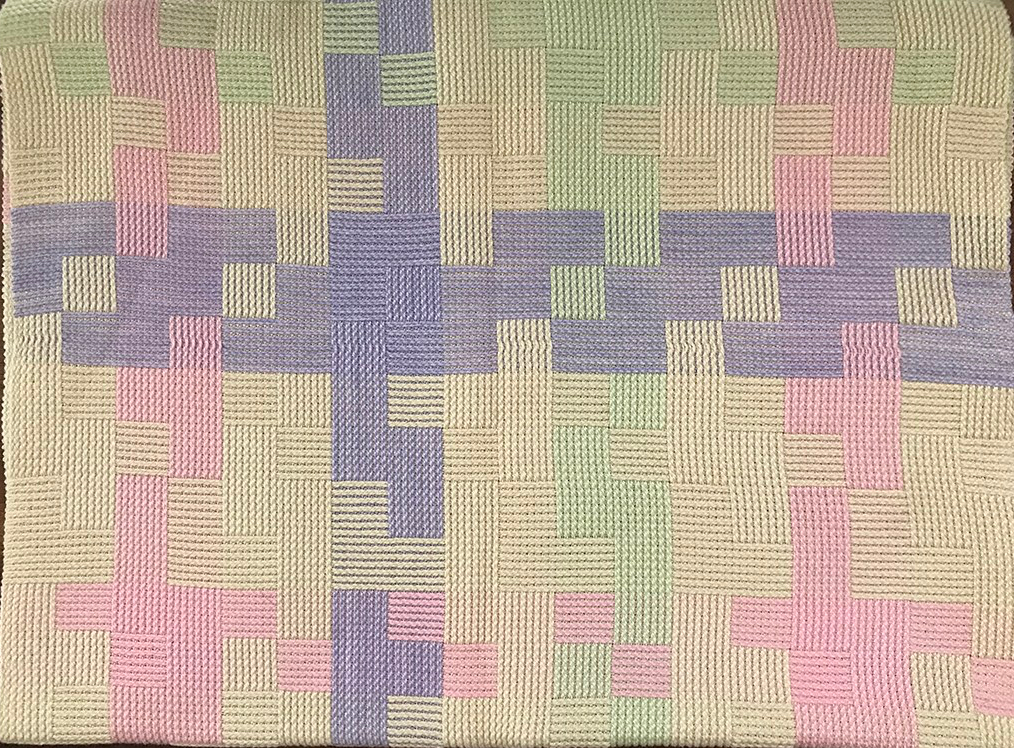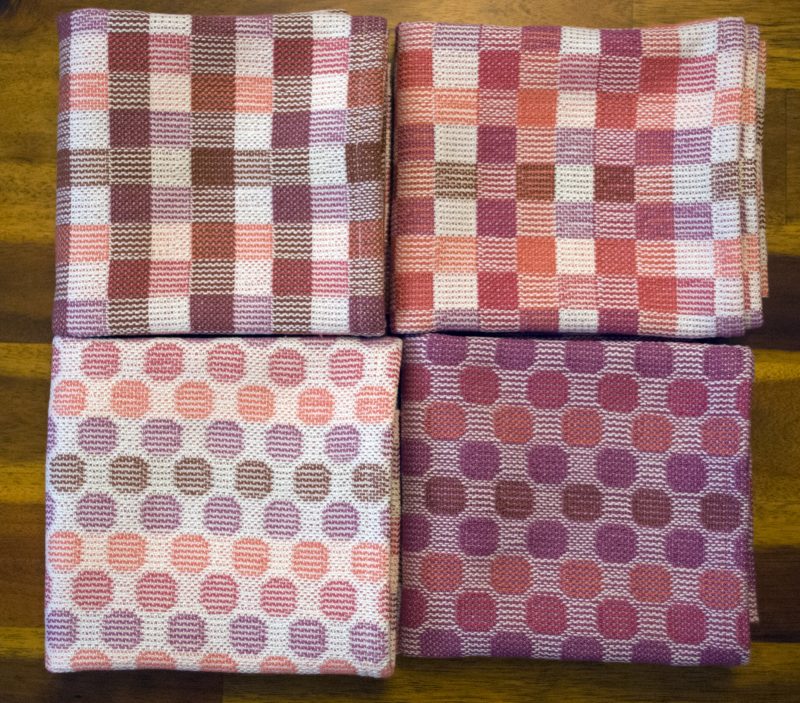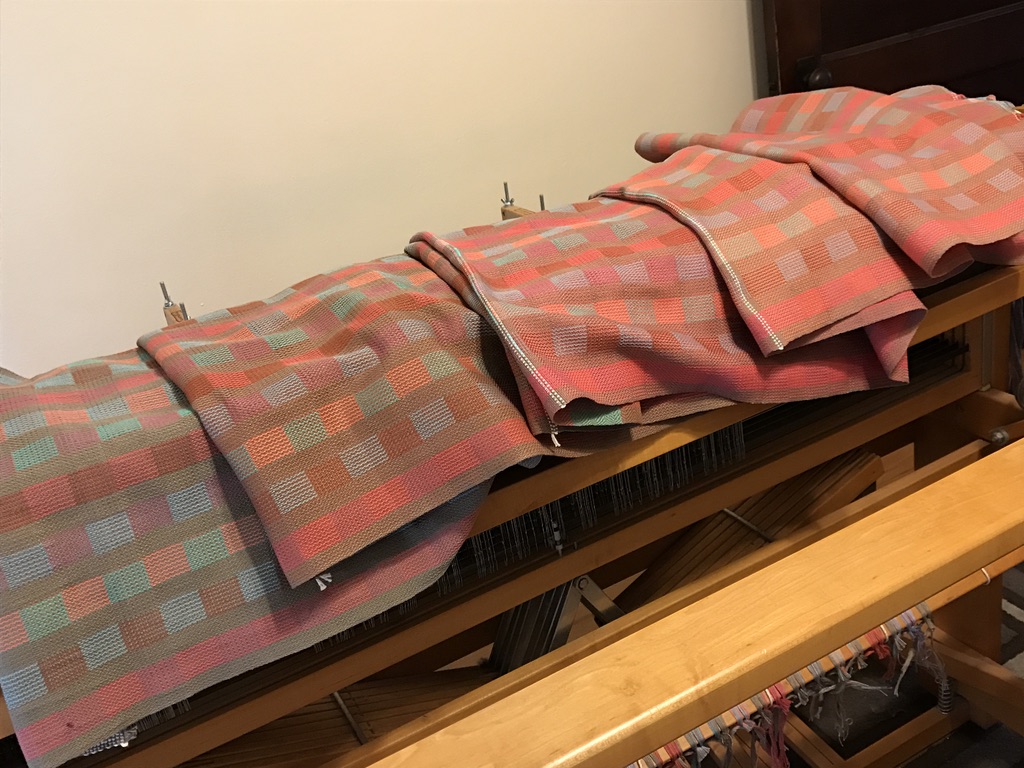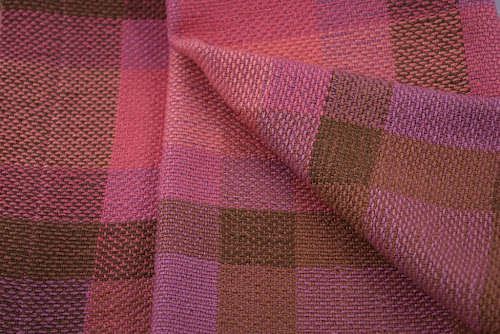
Back in February I planned and put on a warp of the Rhythm Crackle pattern with the intention of finally coming up with a digital pattern for my Etsy shop. I started with a cone of variegated 8/2 unmercerized cotton from yarn.com. I then planned on using a lot of different colors and sizes of yarn for weft to see what works best. It turned into a kind of free for all, a mash-up of what I had on hand, plus a couple of special orders thrown in.
Here’s what I did:





I wove four towels sett at at 24 epi. The colors kind of reminded me of Monet’s Water Lilies, so I stuck to greens and purples for weft.
Towel # 1: I used one shuttle, and wove the whole thing with 8/2 cotton weft, pattern and tabby. The pattern is discernible, but also kind of dispersed. A nice effect.

Towel # 2: I went to a two shuttle weave, with 8/2 Cotton for tabby, and 5/2 unmercercerized cotton for pattern. (I really like the Ashford 5/2 unmercerized cotton, but unfortunately it doesn’t come in many colors, and the 10/2 unmercerized cotton has been discontinued.) The pattern threads beat down closer, but not as close as they would have had I used 10/2 cotton for warp. Still, a good effort.

Towel # 3: Here I used an on-hand 10/2 mercerized cotton for tabby, with everything else being unmercerized. The pattern beat down well with the thinner tabby weft.

Towel # 4: I decided to order some Brassard 8/4 unmercerized cotton for this towel and the next one. Here the proportions are perfect for the 8/2 warp. It turned out well, with a rather heavier hand for a towel than I’m used to. It would work well for a blanket or placemats.

Towel # 5: I used a mercerized 10/2 cotton for tabby weft, mainly because the color worked best. The hand is ever so slightly lighter than #4.

I will continue experimenting with yarn sizes for the weave. Crackle structure is amazingly versatile. Using mercerized 10/2 cotton for warp and tabby with mercerized 5/2 cotton for pattern would work well for runners. 16/2 unmercercerized cotton (warp and tabby) with 8/2 unmercerized cotton (pattern) is a combination that would work for a lighter weight towel. Stayed tuned for the pattern in my Etsy shop!

